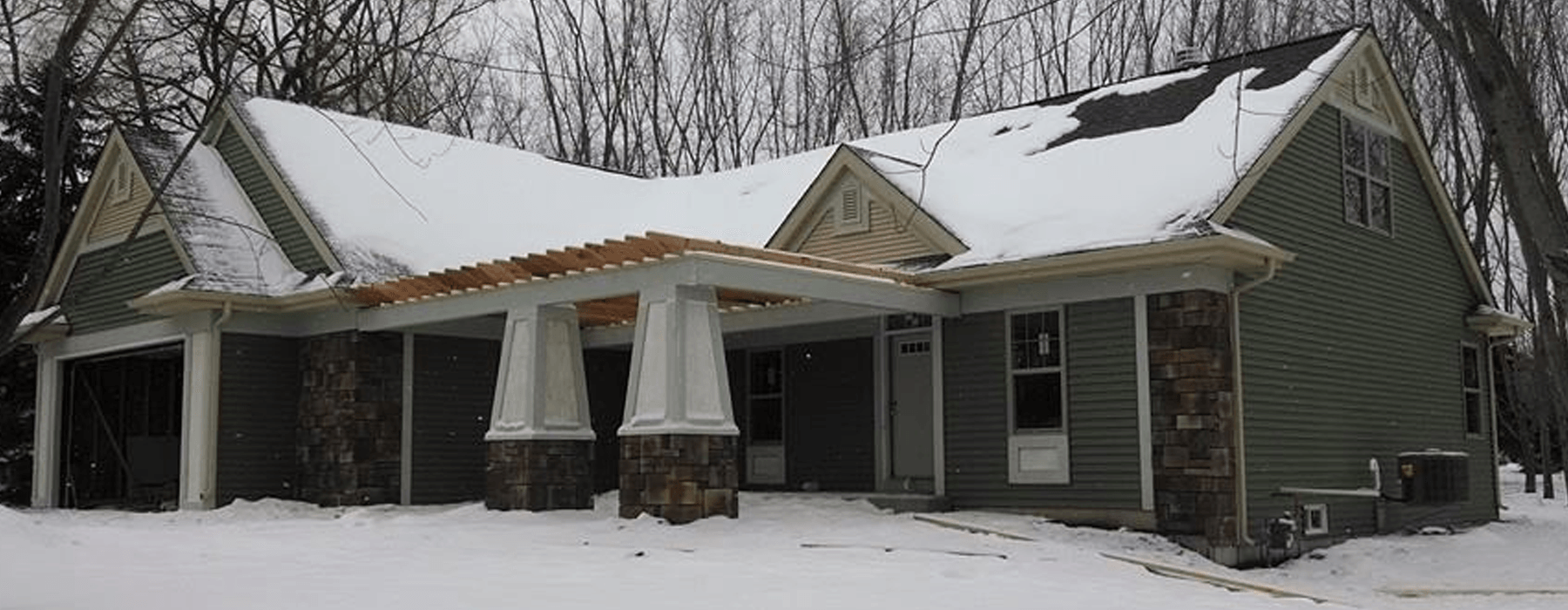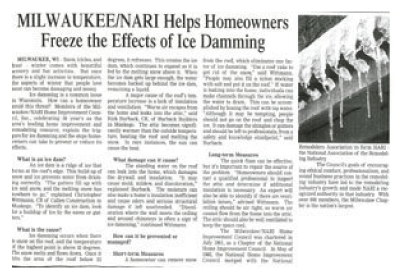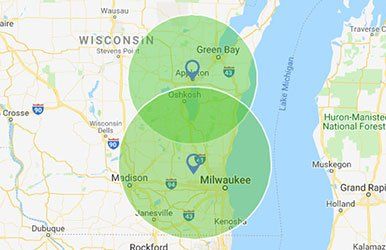Stop Ice Dams Before They Start With Our Expert Help
Don't Let This Winter Get the Best of You
What is an ice dam?
An ice dam is a ridge of ice that forms at the lower edge of a roof and prevents water produced by melting snow from draining off the roof. The water that backs up behind the dam can leak into a building and cause damage to walls, ceilings, insulation, and other areas.
What causes ice dams?
Nonuniform roof surface temperatures lead to ice dams. Heat loss from a house, snow-covered roofs and outside temperature interact and lead to ice dam formation. For ice dams to form, there must be snow on the roof, and, at the same time, the upper portions of the roof's surface must be above 32 degrees F, while lower surfaces are below 32 degrees F. For a portion of the roof to be below 32 degrees F, outside temperatures must also be below 32 degrees F. When we say temperatures above or below 32 degrees, we are talking about average temperatures over sustained periods of time.)
The snow on a roof surface that is above 32 degrees F will melt. As water flows down the roof, it reaches the portion of the roof that is below 32 degrees F and freezes. This creates an ice dam.
The dam grows as it is fed by the melting snow above it, but it will limit itself to the portions of the roof that are, on the average, below 32 degrees F. So the water above backs up behind the ice dam and remains a liquid. This water finds cracks and openings in the exterior roof covering and flows into the attic space. In the most common case, the water simply backs up and flows under the shingles. From the attic, it could move into exterior walls or through the ceiling insulation and stain the ceiling finish.
What damage can ice damming cause?
Water on the roof can leak into the home, causing major damage to the drywall and insulation. Discoloration, where the wall meets the ceiling, is often a sign of ice damming.
Other damage from ice damming includes:
- Mold, mildew, and discoloration
- Inefficient insulation
- Strong odors and structural damage
How can ice damming be prevented or managed?
Short-term solutions:
Remove snow from the roof with a roof rake
- Fill a nylon stocking with salt and place it on the roof - this will help with melting snow and ice
- Make channels through the ice so water can run off the roof and not into the home - using a house will easily create the channels
- Do not try and chop the ice from the roof - it will cause more damage to your roof
Long-term solutions:
Contact a qualified professional to conduct an inspection of the roof and attic. They will be able to make sure the insulation in the attic is appropriate and ensure that the ceiling is airtight. They will be able to determine if any actions should be taken to reduce your risk of ice damming.
Call us at
262-673-6409
for a
FREE estimate.
Prevent the damage before it even begins with the friendly
professionals at D & W Seamless Gutters today!
professionals at D & W Seamless Gutters today!




